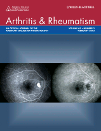Brief Report: Differences in multijoint symptomatic osteoarthritis phenotypes by race and sex: The Johnston County Osteoarthritis Project†
The findings and conclusions in this report are those of the authors and do not necessarily represent the official position of the CDC or the NIH.
Abstract
Objective
To determine differences in the phenotypes (patterns) of multiple-joint symptomatic osteoarthritis (OA) involvement by race and sex.
Methods
A cross-sectional analysis of symptomatic OA phenotypes was performed in a community-based cohort, comprising subjects for whom data were collected from 4 sites of symptomatic OA involvement (the hands, knees, hips, and lumbosacral [LS] spine) at a single visit (2003–2010). Mutually exclusive phenotypes describing all combinations of these 4 sites were compared by race and by sex, using Fisher's exact tests. For those phenotypes occurring in >40 subjects, logistic regression was performed, with adjustments for race, sex, age, and body mass index (BMI), and interactions of race and sex were assessed.
Results
The sample included 1,650 participants, of whom 36% were men and 32% were African American. The mean age of the subjects was 66 years, and the mean BMI was 31 kg/m2. Overall, in this sample, 13% of subjects had symptomatic hand OA, 25% had symptomatic knee OA, 11% had symptomatic hip OA, and 28% had symptomatic LS spine OA. African Americans, as compared with Caucasians, were less likely to have involvement of symptomatic OA in the hand only, or in some combination of the hand and other sites, but were more likely to have involvement of the knee only. Men, as compared to women, were less likely to have involvement of the hand only, but were more likely to have involvement of the LS spine only.
Conclusion
There are differences in the phenotypes of multiple-joint symptomatic OA involvement by race and by sex that may influence the definitions of multiple-joint, or generalized, OA.




